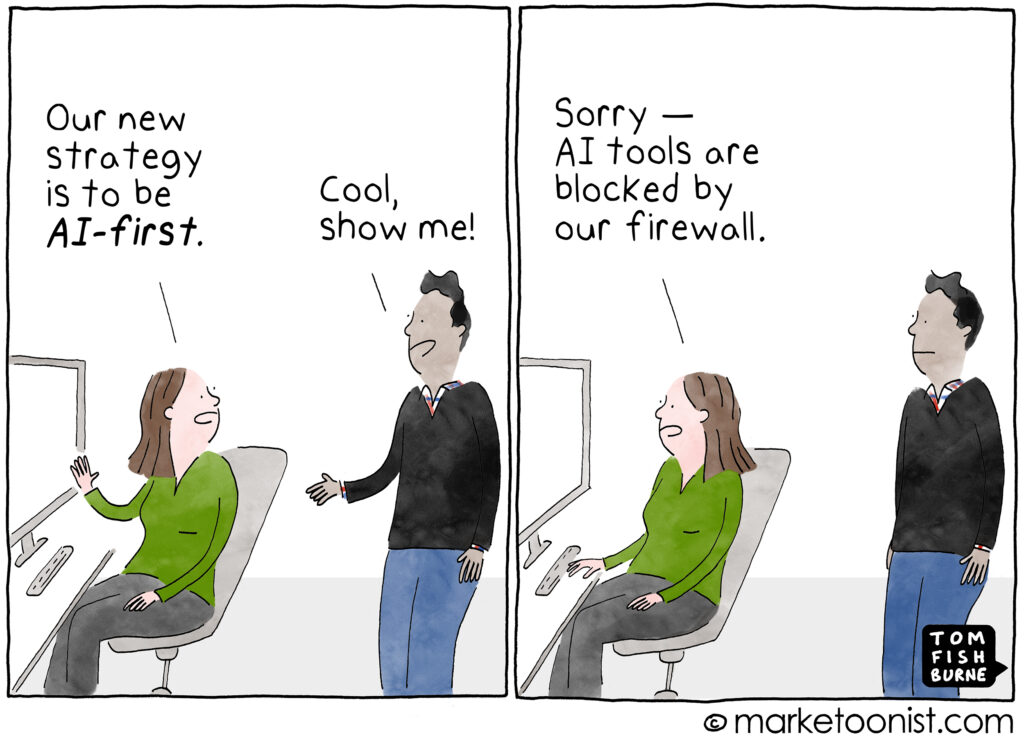Can you believe how many articles, presentations, blog posts, and podcasts on artificial intelligence (AI) are out there? It’s been a few years since ChatGPT burst onto the scene, and while it feels like AI has been everywhere ever since, we’re still just scratching the surface, especially when it comes to fundraising in the nonprofit sector.
According to a recent survey, 82% of nonprofits say they are already using AI in some way. But even with this momentum, many organizations are still exploring how to apply AI effectively and ethically. The business and societal transformations are only beginning.
Rather than adding to the already voluminous content on well-known AI use cases in fundraising, we’re focusing on some less obvious applications that your team may not have considered but could have a real impact.
Common (and Useful) Uses of AI in Fundraising
- Predictive Analytics: AI is especially strong at making predictions—if you have high-quality data to work with. Common fundraising predictions include:
- Next Best Ask: Determine the optimal donation to ask a specific donor for to maximize yield
- Timing and Method: Identify when and how to reach each donor, based on their habits and past. For example, some donors give at year-end, some read emails in the morning and so forth. Match ask method to donor preferences (phone, text, email, social media, US mail).
- Campaign Yield: Estimate how much specific campaigns are likely to raise.
- Smarter Content Creation: Tools such as ChatGPT and Claude significantly reduce the time and increase the quality of content for fundraising assets, including:
- Email and web copy
- Major donor briefing decks
- Program descriptions
- Campaign messaging tailored to donor interests
- Donor Prospecting and Segmentation: AI can expand your donor base by identifying new prospects and classifying them into segments for targeted outreach.
- Real-Time Reporting and Analytics: Generate graphs, dashboards, and insights automatically to track campaign performance.
- Donor Support: Chatbots and AI-powered agents can answer common donor questions 24/7, improving responsiveness without increasing staff burden.
These use cases are powerful, but they’re just the beginning.
Beyond the Obvious: Unexpected Ways AI Can Help
AI can also support fundraising in more creative or behind-the-scenes ways. Here are a few ideas that might surprise you.
- Run Campaign Simulations: AI can help you run simulations—also known as digital twins—to test fundraising strategies before rolling them out in the real world. Think of it like A/B testing supercharged. Instead of sending out multiple email versions and waiting to compare open rates, you can model different campaign variables in advance and predict their impact on revenue, engagement, and donor retention.
- Detect Fraud and Protect Donor Trust: Ever received a suspicious $1 donation? That might be a stolen credit card test. AI can analyze patterns in donation data and flag potentially fraudulent transactions, keeping your donors (and your organization) safer.
- Brainstorm Campaign Messaging: AI can act as a creative partner, offering new ways to talk about your mission and impact. If you feed it examples of successful past campaigns, it can suggest fresh messaging angles, help prioritize which programs to highlight, and even offer recommendations for audience targeting.
- Streamline Back Office Reconciliation and Operations: AI isn’t just for donor-facing tasks. It can help reconcile data between your fundraising and accounting systems, generate invoices for pledges, and detect errors in financial records. Automating these processes increases operational efficiency and reduces the risk of manual mistakes.
Tips for Getting Started with AI
As you explore AI’s potential for fundraising, we encourage a thoughtful, mission-aligned approach. Here’s how to begin:
- Start small: Pilot a use case before investing heavily in tools or integrations.
- Stay involved: Always review an AI’s output before using it. AI can be helpful—but it still makes mistakes.
- Prioritize privacy and ethics: Ensure that your use of AI aligns with your organization’s values and data policies.
Final Thoughts (and a Smile)
We expect AI’s role in fundraising to continue quickly evolving. As new tools emerge and nonprofits learn from one another, we’ll see more creative, impactful, and efficient uses emerge.
And to close with a smile: I recently saw a cartoon about AI that made me laugh, though I’m still not sure what the deeper meaning was. Maybe that’s the fun of it. Sometimes, even with all the technology, we’re still figuring things out together.




